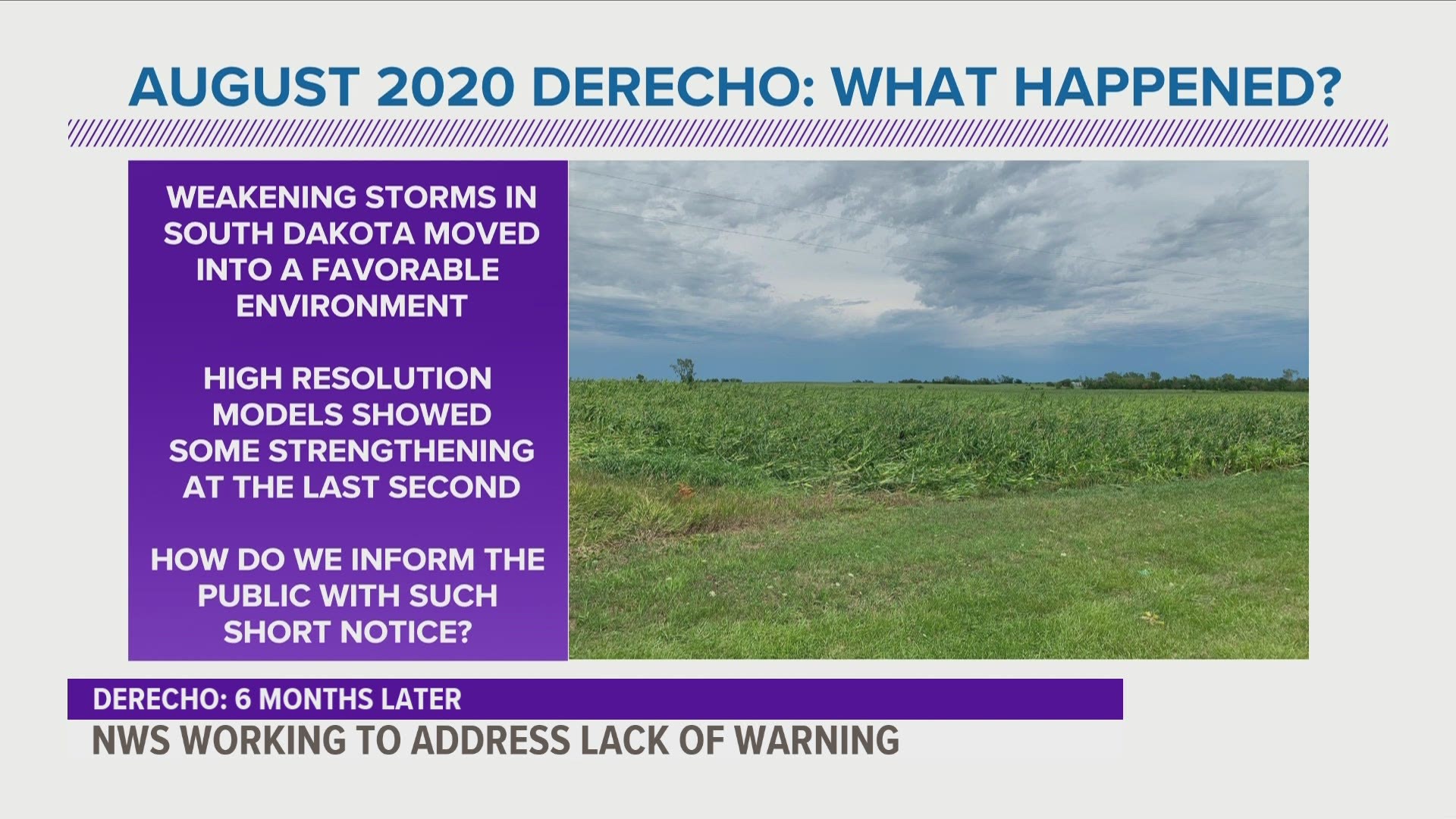IOWA, USA — Wednesday marked six months since the derecho ripped through the state, leaving three Iowans dead and thousands without power for weeks.
A lot of work to repair the damage has already been done, but there are still scars in cities, homes and farmlands. Not a single Iowan was a stranger to the destruction.
Many Iowans feel they didn't get a warning about the storm before it hit— those out on the roads were unprepared and unprotected.
The National Weather Service is looking to change that for the future.
It's not as though the NWS didn't warn anyone of the storm coming in.
There was a chance for severe weather in the forecast leading up to Aug. 10, but the predictions (including Local 5's) did not suggest a storm of this particular intensity.
"We lacked confidence in whether a group of storms falling apart over South Dakota at night would have enough energy to move into our state at all," explained Local 5 Meteorologist Brandon Lawrence.
RELATED: 'We're definitely just trying to survive out here': Iowa farmers react to extensive crop damage
The night before the storm, high-resolution models hinted at a powerful line of storms moving across the state.
However, no data pointed to the level of severity that was to come.
Early on Aug. 10, the decaying cluster of storms struggled to move into western Iowa, but once they did they tapped into a favorable environment for strengthening storms with ample warm air and humidity.
Once the storms arrived in Iowa, meteorologists knew they would quickly intensify. The storm strengthened so suddenly that the state went from a Level 1: Marginal Risk for severe weather at 12 a.m. to a Level 4: Moderate Risk by 10:30 a.m.
So, how are severe weather alerts sent to you? Currently, it's done with Wireless Emergency Alerts (WEA) sent directly to your phone.
Examples of these alerts are tornado and flash flood warnings or Amber Alerts.
Following the derecho, meteorologists in both private and public sectors are pushing for storms like derechos to be pushed through WEAs.
Some are even suggesting a new category of severe thunderstorm warnings to distinguish between typical summer hail and wind storms and storms like the August derecho.
It goes without saying the derecho is one storm meteorologists will study for years to come.

